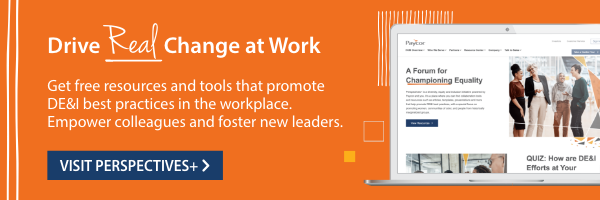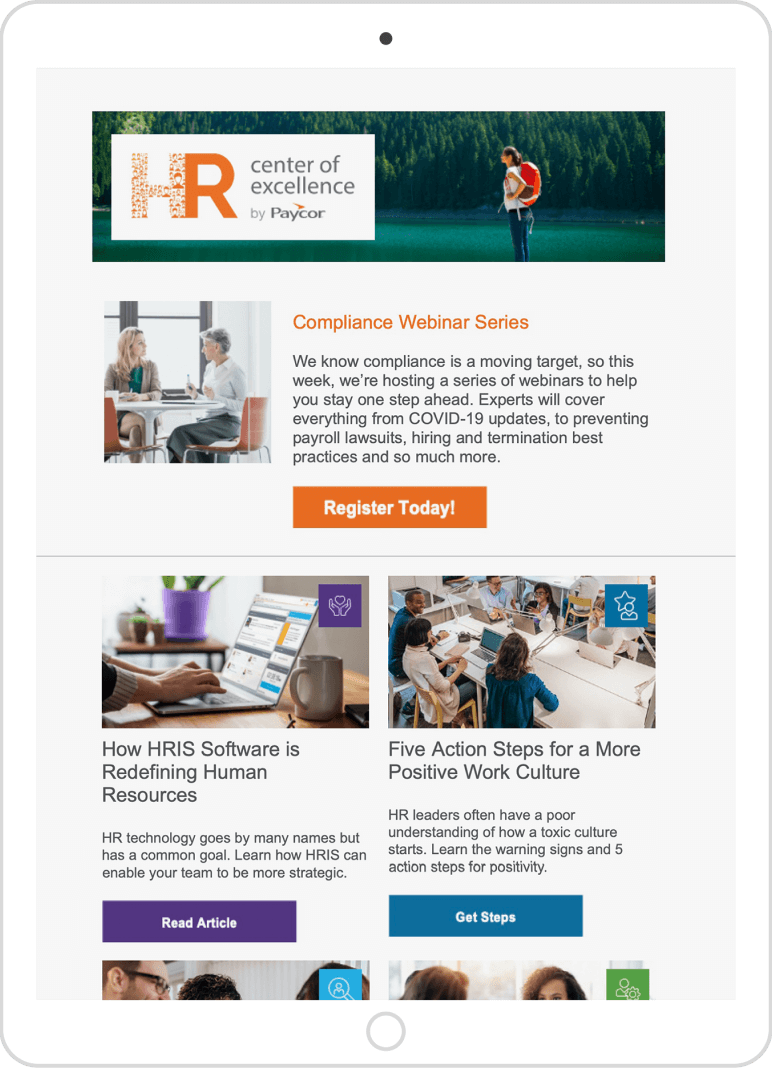Today, there are five different generations in the workforce. Baby Boomers continue to retire at a record pace, while Generation Z is just coming of age. Over the next few years, we can expect a major shift in that balance – by 2030, all Baby Boomers will be 65 or older.
Each generation has its own priorities, strengths, and career goals. That’s partly because these cohorts have been shaped by different world events – think about reaching adulthood during the Vietnam War vs. the pandemic. But that’s not the whole story. Everyone’s needs change over time. A married parent of three will have different goals than a single, childless college student.
From that perspective, the different generations have more in common than it seems. They also have a lot to learn from each other. This is where HR can help.

Addressing Generational Friction
Intergenerational conflict might not be new, but it’s certainly in the news. There are nationwide narratives about the rift between Baby Boomers and Millennials, the work habits of Gen Z, the independent nature of Gen X, and the list goes on.
“Every generation is different from the one before, and that’s a strength,” says Alanna Perez, Paycor’s business strategy director. “Younger people have new ideas, new perspectives, new energy. When you write them off, you increase turnover – which no one can afford right now. And those young employees can learn a lot from people with more established careers. The solution is for both sides – people of every age – to cultivate curiosity. What can we learn from each other? How can we work together? Then it starts to get interesting.”
Instead of reinforcing generational differences, HR can use these strategies to empower workers of every generation.

Be Inclusive
Ageism is a serious problem, and it can go both ways. The same person could get passed over for one job because they’re “too green” and for another because they’re “too old school.” It’s clearly inappropriate to make sweeping statements about everyone of a certain race or a certain gender. So why is it ok to generalize about people of a certain age? This is just one more dimension of any DE&I strategy.

Create Mentorship Programs
Use a mentorship program to bridge generational gaps. Try pairing younger and older workers on different projects so they can learn from each other. And don’t just have senior employees mentoring junior ones – reverse mentorship is just as important. If one of your Gen Z employees is a social media expert, why not have them do a presentation for your whole marketing team?
Cross-mentorship exposes each generation to the other’s strengths. Younger workers can learn about leadership and how to plan their careers. Older employees can stay current on new trends. More importantly, you’ll build a culture of continuous learning, which drives employee loyalty and retention.

Get to Know Your Team
Don’t make assumptions. Instead, you can learn about your team’s needs by running a company-wide survey. Then, analyze the data to understand their top priorities. This information can inform your HR strategy, especially the way you design and administer benefits.

Offer Learning Opportunities
A recent survey said 94% of workers would stay with a company longer if it invested in their career development (LinkedIn). A number that big has to include employees across generations but keep in mind, when it comes to learning opportunities, people of different ages tend to have different priorities.
- Younger people (of any generation) are thinking about their future careers. They want to learn new skills and make a good impression on management.
- Older workers want to stay engaged with their work and the people around them. They might want to learn about new technologies or cultural shifts, or just build stronger relationships with their coworkers.
With a comprehensive learning management system, various employees can focus on different subjects. Make sure they also have opportunities to put their skills into practice.

Preserve Institutional Knowledge
Today, people live longer than ever – much longer than the companies they work for (Josh Bersin). In this dynamic, there’s a growing risk of losing institutional knowledge when experienced workers retire. HR can guard against that by fostering intergenerational collaboration.
There are countless ways to implement this strategy. For example, you could have tenured employees train newer hires. You could also start a job shadowing program, giving people of every age the chance to get to know each other. Make sure it goes both ways, with older people shadowing younger ones and vice versa. This sets the tone for company culture and makes people across the company feel valued.

Interrupt Implicit Bias
Implicit biases are unconscious, usually unfair opinions we hold about other people. It’s easy to see how racist or sexist bias could harm workplace culture. Ageist bias can do the same.
Unlike some other forms of bias, ageism often goes in both directions: people can be discriminated against because they’re either “too young” or “too old.” These ideas lead to harmful behaviors, which can be very subtle. When you’re at work, do you hear phrases like “the old guard”? Do people on your team refer to adult women employees as “the girls”? These are signs of implicit bias. Fortunately, HR can improve workplace culture with implicit bias training.

Lead by Example
Age-inclusive culture starts at the top. To build a welcoming, egalitarian workplace, you’ll need executive buy-in. In a perfect world, that means having a multi-generational leadership team – but that’s not always up to HR. Regardless, you should still involve the C-Suite in your DE&I strategy. For example, you could encourage leaders to publicly recognize employees of every age. They can also join your company-wide mentorship programs, working closely with new and experienced employees.
These tips are just a starting point. Unlike some other identities, like ethnic background, age changes over time. As your team’s demographics shift, your DE&I strategy will have to follow suit. For example, make sure to survey your team regularly to keep up with their changing needs. HR needs to stay flexible and update company policies as needed.
Building on the unique abilities that every employee contributes to the workplace can launch your company into a new level of goal achievement, performance and problem solving.
For more free resources and tools that promote DE&I best practices in the workplace, visit Perspectives+. It’s Paycor’s online knowledge library designed to help our partner network drive change, empower colleagues, and foster new leaders.











